Deer antlers are suddenly a blazing, hot topic. Somehow an entirely new sport, shed hunting, has drawn thousands of new folks into the woods after deer season. Shed hunting deer antlers will be a boon to our parks and people. If you are still new to shed hunting, here’s all you need to know about deer antlers and how to find them. Good luck!
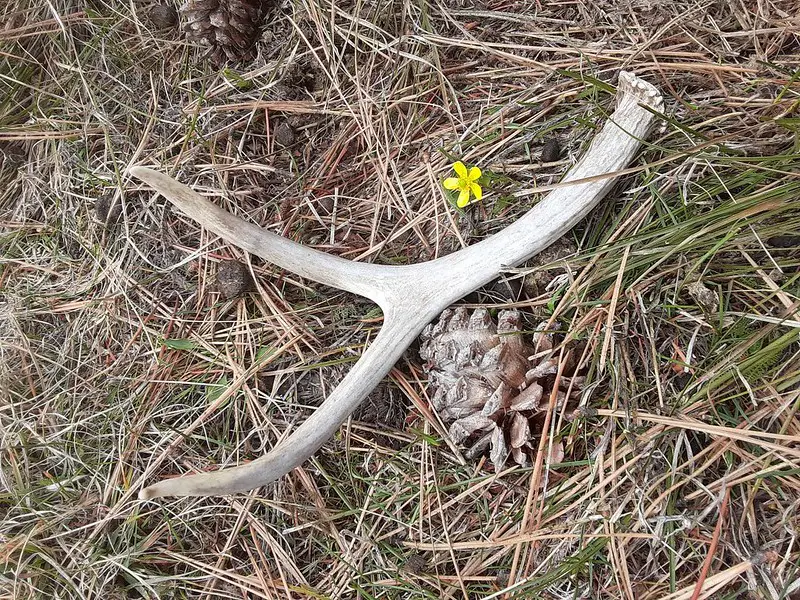
Related: How to score a buck’s rack.
Related: How to field score a rack while hunting.
What are deer antlers?
Deer antlers are skull appendages that regrow and shed each year. Every year sees an increase in antler size and complexity. Originating at the pedicles covered in a velvet skin that dies as testosterone increases, during mating season, growth ceases, and antlers are cast (shed) by spring.
Antlers are bones; their growth depends on nutrition, deer health, genetics, and age. The larger the deer, the more nutrients are consumed and converted into the calcium and phosphorous needed to allow for rapid bone growth.
Antler growth is most significant when a buck reaches maturity (4 1/2 years old) and then decreases after it passes its prime (8 1/2 years old).
Related: What’s the best time to hunt a deer?
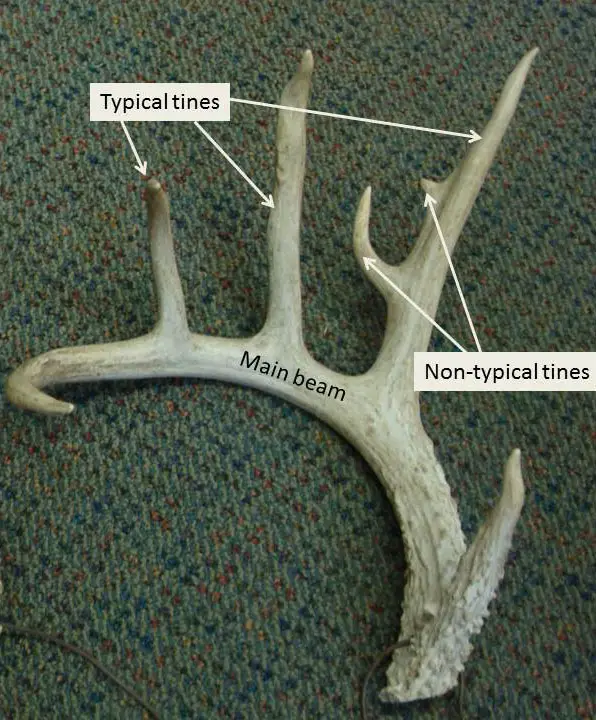
The stages of deer antler growth.
After the deer rut ends in winter, testosterone levels drop, and the antlers die and are cast (shed).
Deer antler regrowth begins in April with the appearance of small skin-covered bumps or nubs. These nubs are slow-growing, soft cartilage growths stemming from the pedicles and measuring up to two inches in height.
These antler nubs continue to grow and eventually become the left and right main beams of the buck’s rack. Each beam will then sprout separate tines of their own.
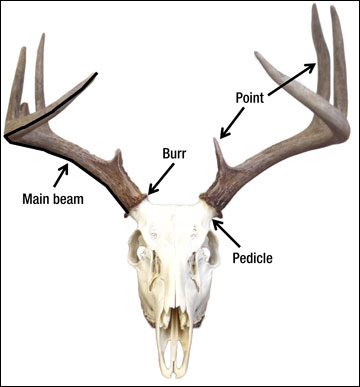
Related: Where is the best place to shoot a deer?
In the summer, deer antlers remain soft while still receiving blood to the skin to allow for growth. During this period, the antlers will be deformed for that year if that skin is cut or bruised. If the pedicle was previously damaged while fighting with another buck, antler deformation might persist for years.
By late summer, the antler skin’s blood supply ceases. The skin now dries and falls off and the antlers harden. Many researchers believe this drying causes considerable itchiness. That itchiness drives the bucks to rub their antlers against tree trunks and branches vigorously.
Related: How to age deer tracks.
Deer antlers and breeding rights.
The new antlers are now hardened and ready for use during the rut, the start of the deer mating season.
All that rubbing when the antler skin fell off helped develop the buck’s neck muscles for use while sparring for a mate. The antlers are also constantly rubbed early in the fall to help vent aggression. But the true purpose of the antlers isn’t realized until the fall rut. Now the antlers will be deployed to challenge other bucks in combat. The winner gets the top position in the herd and breeding rights.
Related: Why do does sometimes have antlers?
Why deer antlers shed.
After mating season, the tissue between the pedicle and the antlers begins to break down. As its foundation to the skull weakens, the antlers become looser and looser. By late December or early January, the antlers have started to shed, with most bucks having lost their antlers entirely by late February or early March.
From here, the deer antler annual regeneration begins anew.
Related: What do deer snorts and tail flags mean?
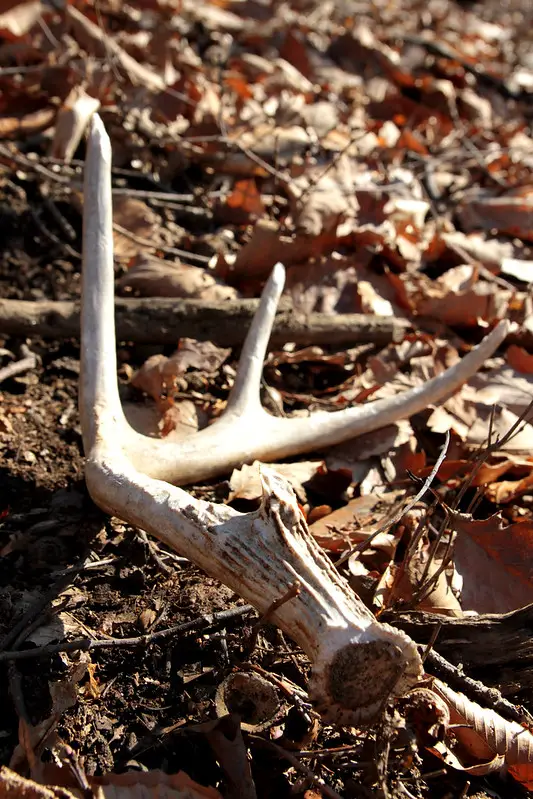
Shed hunting for beginners.
Shed hunting is a sport. A sport because it involves physical effort and features two opposing teams. It’s a race, and there is an invisible clock counting down the time remaining before the antlers are covered and lost to the elements. The shed hunter wins when they discover cast-off antlers before the mice do.
The contest begins the moment the shed antler hits the ground. For the lucky deer now free of those cumbersome antlers, foraging for food and traveling through the woods is much easier.
The local rodent population is also a potential winner. Antlers are rich in nutrients like calcium and protein. Mice and squirrels will supplement their diets and wear down their constantly growing teeth on any antler they find.
Related: How to track a wounded deer.
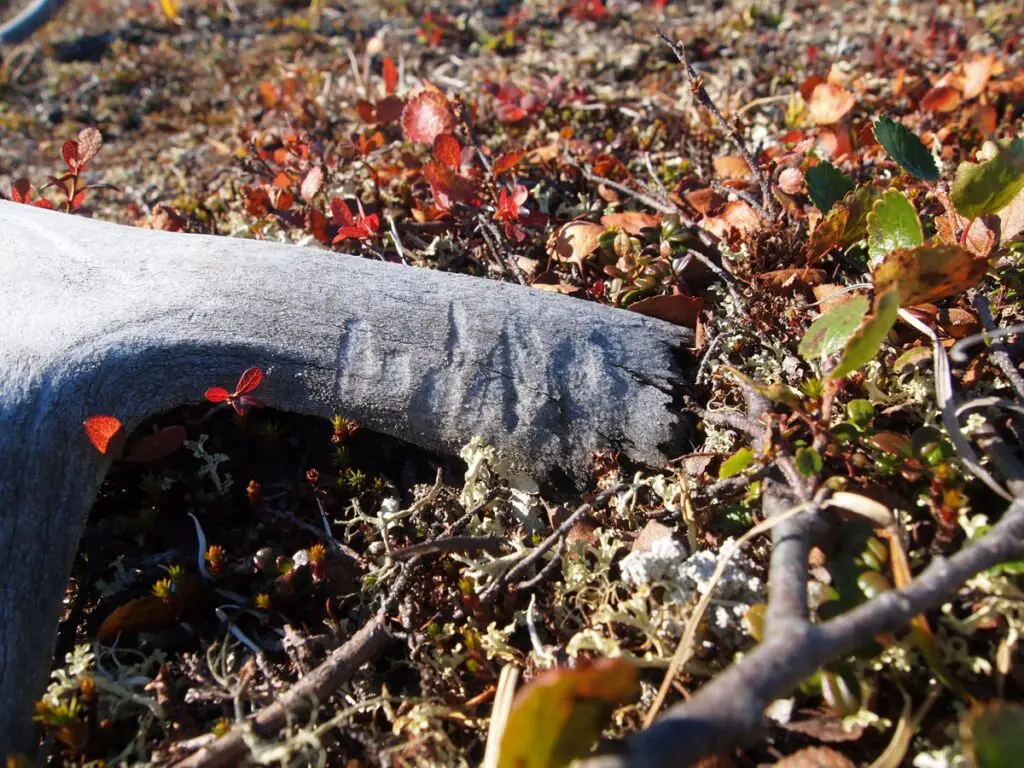
When to go shed hunting for deer antlers.
Where antler shed hunting is legal, human shed hunters also seek out these trophies. Antlers are kept as parts of a collection, crafted into home decor, used in recipes, or given as safe dog treats that won’t splinter like other bones.
Your best bet is to start shed hunting in late February (when most of the bucks have shed their antlers). If you wait until the warmer month of April, the foraging rodents will likely beat you to the punch.
Related: What are deer warts?
Where can you find deer sheds?
It would be best if you began your shed hunting by scouting for deer trails between bedding areas and late winter food sources. Concentrate your efforts by walking these trails and paying close attention to the ground beneath you. The bucks will have spent a great deal of time traveling these routes, and here is where the antlers may have naturally dropped off.
Spend the most time searching for deer antlers while in a bedding area or foraging site. Why? It’s simply a matter of the odds. This is where bucks spend the most significant amount of time, so this is where the antlers are most likely to drop. Whenever possible, use a systematic search pattern, like a spiral starting from the center of the area.
Whenever you come across a fence-line, stream, or tree with low-hanging branches, be prepared to scrape away any snow and spend some additional time visually sweeping the ground. These are places where deer have jumped over objects and gotten the racks snagged in limbs. The force of landing from a jump or the twisting and pulling needed to untangle a rack will sometimes yank an antler free and deposit it in these locations.
Related: How much meat can you get from a deer?
How to spot deer antlers while shed hunting.
The hardest part of shed hunting is separating the fallen branches from the tines. Don’t worry, though; you’ll get better and better with time.
For now, think like and experience deer hunter, don’t look for the whole deer; look for parts of it. Train your eyes to seek out the details that make up the antlers.
Walk and scan slowly, and avoid the temptation to daydream and lose your focus. Closely examine any sticks you notice before moving on. If possible, take an old shed out into the forest and toss it blindly into some thick ground clutter. The practice of searching for that known shed will sharpen your shed hunting skills.
Related: How to call in a deer.
How to make an antler trap.
Where deer baiting is legal, you have one more trick up your sleeve.
Find two small trees growing close to each other and then wrap the chicken wire tightly around the tree trunks and connect it all. Now press the wire into a semi-circle and place the bait in the trap’s center.
Building antler traps should only be done when the bucks are shedding their antlers. Make frequent daily visits to your trap, and be prepared to summon help if you find a buck has become trapped.
There are alternatives if you are still worried about endangering deer with a wire trap. You can use an existing or artificial brush pile. Simply place your bait deep inside the brush and wait for the buck to push his head inside. You can also place two bales of hay in a V-shape, bait the center of bales, and let the deer snag a tine in the hay.
Related: How to build a deer food plot.
The dangers of using a poorly trap to collect deer antlers.
Aside from trapping a deer, there is another major problem associated with using a poorly made antler trap to collect deer antlers; pedicle damage.
As was pointed out earlier, pedicle damage can result in permanent antler disfigurement. If the buck gets his antlers trapped too early, the antlers and a section of the pedicle may be torn off. Now the poor buck has damaged a part of his skull. If that damage leads to an infection of his brain, he will undoubtedly die.
Related: Do deer whistles for cars really work?
That’s it! You have all the information you need about deer antlers and how, when, and where to find them. Now all you have to do is get outside and get to work. Good luck!
Interested in trying out the sport of deer hunting?
Here are a few additional articles you will find useful to get you started:

